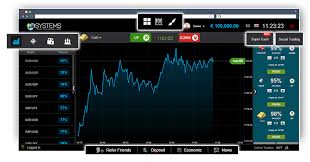Finding the Best Indicator for Binary Options Trading

The Ultimate Guide to the Best Indicator for Binary Options
When it comes to binary options trading, the right indicators can make a significant difference in your success rate. Understanding various indicators, their functions, and their application can elevate your trading game substantially. Many traders have asked about the best indicator for binary options, and while there’s no one-size-fits-all answer, several effective tools can help you make informed trading decisions. To enhance your trading experience, we recommend starting with resources like best indicator for binary options 1 minute best binary options trading platforms that can provide valuable insights and tools.
What Are Binary Options?
Binary options are financial instruments that allow traders to speculate on the price movement of various assets, including stocks, currencies, commodities, and indices. Unlike traditional options, binary options have a fixed payout structure, which means that traders either win or lose a predetermined amount based on the outcome of their trades within a set time frame.
The Importance of Indicators in Trading
In the realm of binary options, indicators serve as crucial analytical tools that help traders make decisions based on price movements and trends. With numerous indicators at your disposal, selecting the most effective one can be daunting. Indicators can signal entry or exit points and help you gauge market sentiment, volatility, and momentum.
Key Indicators for Binary Options
Here are some of the most popular and effective indicators used in binary options trading:
1. Moving Averages
Moving averages (MA) smooth out price data by creating a constantly updated average price. They can be helpful in identifying trends and potential reversal points in the market. The two primary types of moving averages are the simple moving average (SMA) and the exponential moving average (EMA). Many traders use crossovers of different MAs as signals for buying or selling.
2. Bollinger Bands
Bollinger Bands consist of a middle band and two outer bands. The middle band is typically a simple moving average, while the outer bands are set a specified number of standard deviations away. Bollinger Bands help traders assess market volatility and identify overbought or oversold conditions. When the price touches the upper band, it may indicate an overbought condition, while touching the lower band may signal an oversold condition.
3. Relative Strength Index (RSI)

The RSI is a momentum oscillator that measures the speed and change of price movements. The RSI ranges from 0 to 100 and is often used to identify overbought or oversold conditions in a market. Traditionally, an RSI above 70 indicates an overbought condition, while an RSI below 30 signals an oversold condition. This information can guide traders in determining potential reversal points.
4. MACD (Moving Average Convergence Divergence)
The MACD indicator helps traders identify changes in momentum by looking at the relationship between two moving averages. It consists of two lines: the MACD line and the signal line. When the MACD line crosses above the signal line, it is often considered a bullish signal, while a crossover below may indicate a bearish signal.
5. Stochastic Oscillator
The stochastic oscillator compares a particular closing price of an asset to a range of its prices over a specified period. This tool helps traders determine momentum and potential reversal points. The stochastic oscillator ranges from 0 to 100, with readings above 80 suggesting that an asset may be overbought and readings below 20 indicating that it may be oversold.
Combining Indicators for Improved Accuracy
While each indicator can provide useful insights individually, combining multiple indicators can enhance your trading strategy. For instance, using RSI for momentum detection alongside moving averages for trend identification can improve your decision-making process. However, be careful not to overload your strategy with too many indicators; this can lead to analysis paralysis and make your trading less effective.
Setting Up Your Trading Strategy
Once you’ve chosen your indicators, the next step is to establish a trading strategy. This involves understanding how each indicator functions within your chosen timeframe, as well as setting entry and exit points. Backtesting your strategy using historical data can also provide insights into its effectiveness and help you make adjustments as needed.
The Role of Risk Management
Even with the best indicator for binary options, risk management should always be a priority. Proper risk management strategies, such as setting a stop-loss order or only risking a small percentage of your trading capital per trade, can protect you from severe losses and keep your trading account healthy.
Continual Learning and Adaptation
The financial markets are constantly changing, and successful binary options traders must adapt to new conditions. Engage in continual learning through reading articles, taking courses, and practicing trading strategies in demo accounts. Keeping up to date with market news and trends can also give you an edge in your trading endeavors.
Conclusion
Choosing the best indicator for binary options trading is a personal journey that depends on your trading style, risk tolerance, and asset preferences. By understanding different indicators and how they apply to your trading strategy, you can enhance your chances of success. Remember to practice diligence in your research, manage your risks effectively, and stay informed about market conditions to thrive in binary options trading.